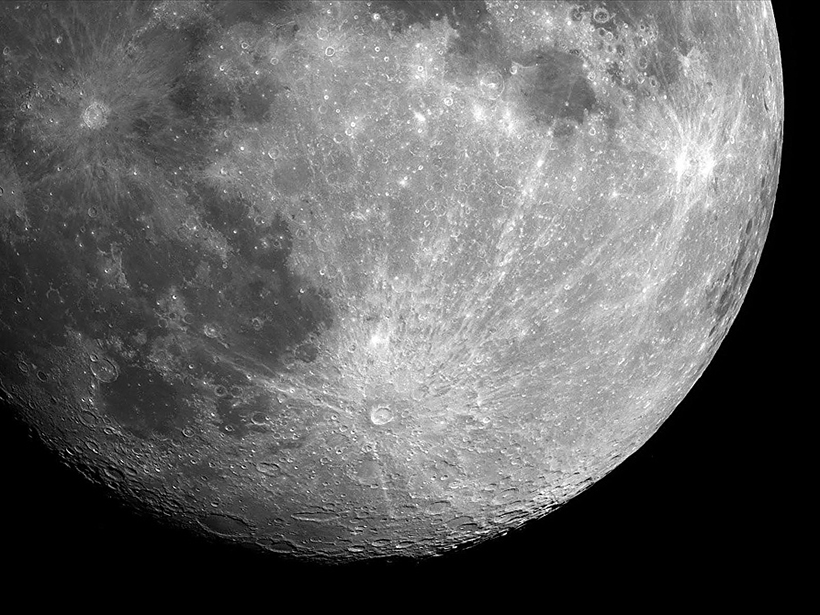Source: Journal of Geophysical Research: Planets
Unlike Earth, where familiar forces like wind and rain are constantly mixing the planet’s soil, the Moon has almost no atmosphere and must instead rely on more exotic forces to mix its soil: meteorites and comets. Analyses of Apollo samples have shown that the lunar soil consists of fragments of basalt from the Moon’s dark, volcanic plains (maria) and light-colored, plagioclase-rich highlands material (anorthosites) transported to the landing sites via impact cratering.
Although the narrow (4–5 kilometer) mixing zone between mare and highlands supports the hypothesis that locally derived materials dominate the Moon’s surface, abundant (>20%) anorthosite in Apollo 11 and 12 samples collected far from the mare-highlands boundary conversely indicates that a substantial amount of highlands material is somehow distributed over long distances.
One clue might come from crater rays, the long streaks radiating out from impact craters. The rays boast an uneven mixture of ejecta that has caused scientists to wonder whether they’re primarily composed of nearby or distal material. To resolve this question, Huang et al. developed a three-dimensional transport model that accounts for the uneven nature of the distant ejecta. The model incorporated three separate components by which material is transported or processed: proximal ejecta near a crater, distal ejecta like crater rays, and mixing due to small crater impacts. The authors then ran a series of simulations in which they sequentially activated each component; the researchers were able to evaluate the relative importance of each one.
The simulations indicate that both local transport and long-distance transport are important processes for moving and mixing material on the Moon’s surface. In particular, long-distance transport like crater rays could explain the anomaly of exotic material found in mare soil samples. The rays from large craters, more than 100 kilometers away from highlands, are substantial sources. The team reports that over time, as rays are redistributed by smaller impacts, mare soils become increasingly contaminated with anorthosite. Thus, when some of the lunar missions, including Apollo 12, landed in locations crossed by ray ejecta, the astronauts were able to obtain samples of this material even though they were far from a mare-highlands contact.
These findings have implications for past as well as future missions. They support the interpretation that the source of the highlands material collected by Apollo 12 is Copernicus Crater and also offer insight into future sampling operations, including how to gather representative samples. The authors argue that because results indicate that large craters can affect lunar samples collected far from the impact, future missions may want to sample regions with less ray contamination to test whether the abundance of anorthosite in Apollo 11 and 12 samples was indeed due to the presence of rays. (Journal Geophysical Research: Planets, https://doi.org/10.1002/2016JE005160, 2017)
—Terri Cook, Freelance Writer
Citation:
Cook, T. (2017), Meteorites mix Moon’s surface at both small and large scales, Eos, 98, https://doi.org/10.1029/2017EO075133. Published on 07 June 2017.
Text © 2017. The authors. CC BY-NC-ND 3.0
Except where otherwise noted, images are subject to copyright. Any reuse without express permission from the copyright owner is prohibited.

